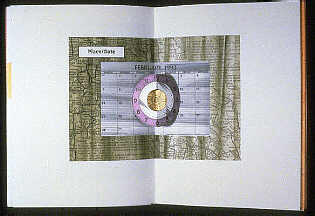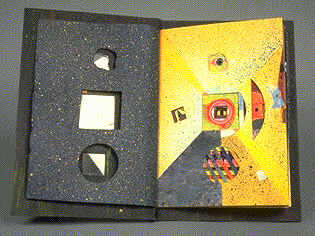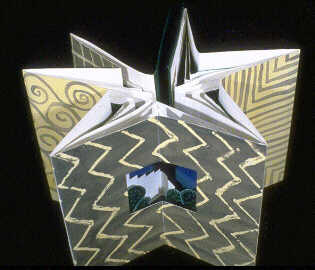 Carol Barton
Carol BartonInstructions for Assembly, Nexus Press, 1993
12" x 8"
Offset book with three sections of overlying pop-ups, bound on tyvek tabs.

Artists like Carol Barton and A.G. Smith use paper engineering to achieve three dimenional and activated pages. For over a century children's books have used these techniques. Another form you can lookat, which uses holes in the pages to create a deep space of multiple planes, is the tunnel book.

John Eric Broaddus
Spin 1/2 2, 1987
13.25" x 9.5" x .5"
Paper, acrylic, ink, tempera.
By cutting holes in the page, the artist creates a multidimensional experience for the reader, as each image is a combination of several layers and changes as the page is turned.
 Carol Barton
Carol Barton
Instructions for Assembly, Nexus Press, 1993
12" x 8"
Offset book with three sections of overlying pop-ups, bound on tyvek tabs.
Turn the pages of Instructions for Assembly and three pop-up projectes are constructed. A playful look at how-to manuals, the book combines text, images and overlying pop-ups in a visual assembly process.
 Carol Barton
Carol Barton
Small Gardens, 1989
7 1/8" x 5 1/8"
Gouache, acrylic, colored pencil. Carousel format.
A "carousel" or "star" book of five small garden views each composed of four layers of accordion-fold pages.
Look at some otherAlternative binding structures
Look at some Tunnel Books
Look at a contemporary bookbinding
Look at a sculptural bookwork
Look at something else